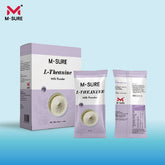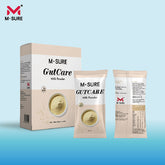How to Choose High-Quality Milk Powder
Choosing the right milk powder is essential for ensuring optimal nutrition and safety—especially for infants and young children. Here’s a practical guide on how to evaluate milk powder based on key quality indicators:
1. Milk Source
-
Geographic Location
Prioritize milk from the “Golden Milk Belts” such as Australia and New Zealand, known for their clean air, water, and rich pastures. -
Cattle Breed
High-quality milk typically comes from Holstein or Jersey cows, which are renowned for their superior milk yield and nutrient profile. -
Feeding Practices
Milk from grass-fed cows tends to have a richer flavor and higher levels of beneficial nutrients like omega-3s compared to grain-fed alternatives.
2. Formula Design
-
Protein Structure
Look for milk powder containing A2 β-casein, which is easier to digest and more similar to human breast milk than traditional A1 protein. -
Fortified Nutrients
Essential additives to look for include:-
Lactoferrin – supports immunity
-
HMOs (Human Milk Oligosaccharides) – promote gut health
-
OPO (Structured Triglycerides) – aids in calcium absorption
-
-
Allergen-Friendly Options
For lactose-intolerant infants, consider camel milk powder, which is naturally low in lactose and hypoallergenic.
3. Production Technology
-
Wet-Mix Process
High-end brands use this method to blend nutrients directly into fresh milk before spray drying, preserving freshness and nutritional value. -
Quality Control
Look for products certified by organizations like ISO or NSF, which often involve 300+ checks per batch for safety and contaminants.
4. Solubility & Texture
-
Dissolution Test
Premium milk powder should dissolve fully in warm water without clumping. -
Milk Skin Formation
After settling, a thick, creamy layer indicates high fat and protein content—a marker of quality.
5. Safety Standards
-
Traceability
Reputable brands provide transparent supply chain information, from farm to packaging. -
Certifications
Look for trusted labels such as:-
Non-GMO
-
Organic
-
CNCA certification (for the Chinese market)
-
Practical Selection Tips
-
Color
Ideal milk powder is pale yellow. Avoid powders that are overly white or have a dark tinge. -
Texture
The powder should be fine and smooth, not gritty—signifying advanced processing techniques. -
Scent
A natural milky aroma is ideal. Avoid powders with strong artificial fragrances.






